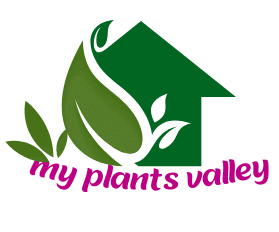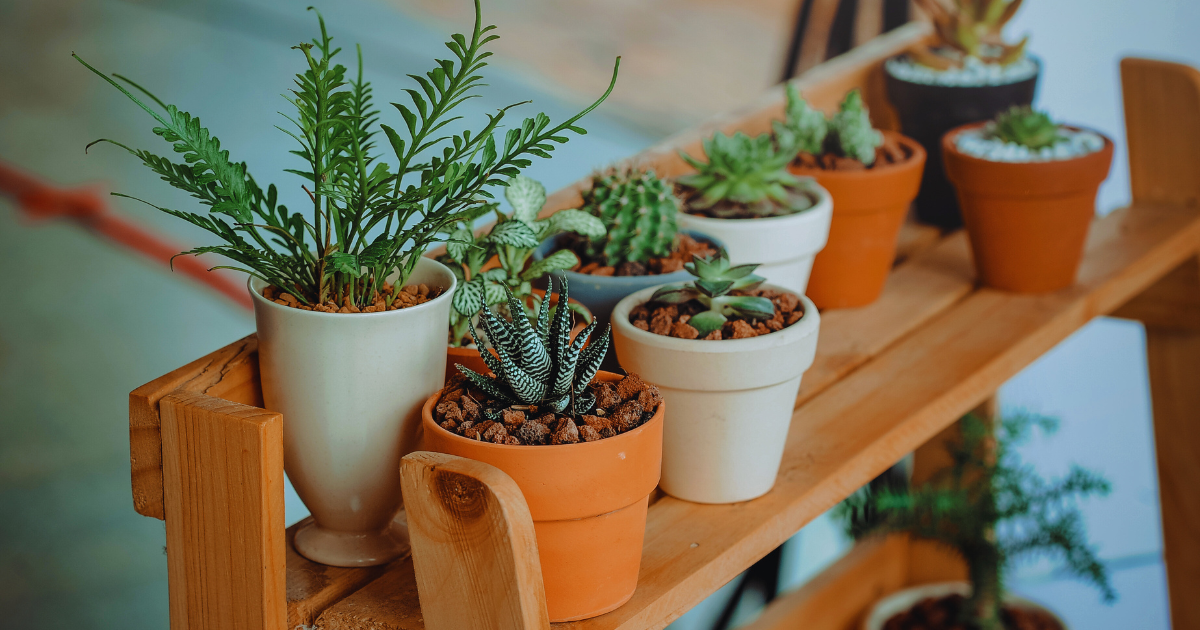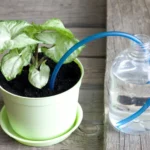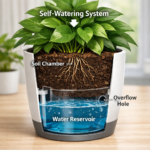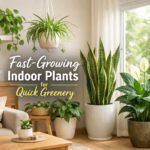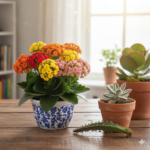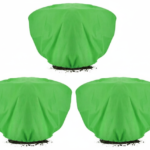Managing the size of potted plants is essential for maintaining a healthy indoor garden that fits comfortably within your space. Whether you’re dealing with limited room or want to keep your plants neat, learning how to limit their growth is key. Overgrown plants can become unwieldy, making them harder to care for and less visually appealing. Fortunately, several effective methods exist to keep your potted plants compact and manageable. By carefully selecting the right pot size, pruning regularly, and adjusting factors like light, water, and nutrients, you can control the size of your plants without sacrificing their health.
This article will guide you through practical tips and techniques on How to Limit the Size of Potted Plants? And to ensure your indoor garden remains beautifully contained, offering a balanced approach to plant care. Whether you’re a seasoned gardener or just starting, these strategies will help you enjoy lush, thriving plants that enhance your living space without overwhelming it.
Importance of Managing Potted Plant Size

Prevents Overcrowding:
When potted plants grow too large, they can quickly overwhelm small indoor spaces, leading to a cluttered and untidy appearance. Managing their size ensures plants fit comfortably within their environment, maintaining a harmonious and organized look.
Promotes Plant Health:
Allowing a plant to grow unchecked can result in overcrowded roots, which may lead to nutrient deficiencies and poor overall health. Limiting the size ensures that the plant has enough resources to thrive, with adequate access to water, nutrients, and air circulation.
Eases Maintenance:
Large, overgrown plants can be difficult to care for, requiring more frequent watering, feeding, and pruning. Smaller, more compact plants are generally easier to manage, making routine care tasks more straightforward and less time-consuming.
Prevents Pests and Diseases:
Overgrown plants with dense foliage can create an ideal environment for pests and diseases to thrive. Keeping plants trimmed and compact reduces the risk of infestations and fungal infections, leading to a healthier indoor garden.
Enhances Aesthetic Appeal:
Well-managed, compact plants have a more polished and intentional appearance, enhancing the visual appeal of your indoor space. Properly sized plants create a balanced, attractive design that complements your home decor.
Overview of Methods to Limit Plant Growth

Pot Size Management:
One of the simplest ways to control a plant’s growth is by using a smaller pot. A limited root zone naturally restricts the plant’s ability to grow larger. When the roots run out of space, the plant will slow its overall development, keeping its size more manageable.
Selecting the correct pot size is crucial in controlling the growth of your potted plants. The size of the pot directly influences how large a plant can grow, as it limits the space available for root expansion. Smaller pots restrict root growth, which, in turn, limits the overall size of the plant. This is because when the roots have limited space to spread, the plant’s growth slows down naturally.
When choosing a pot, consider the type of plant and the desired growth rate. Opt for a smaller pot for plants you want to keep small and compact. This controls the plant’s size and makes it easier to manage and maintain. However, ensuring the pot is not too small is essential, as overly cramped roots can lead to poor plant health.
It’s also essential to monitor the plant’s growth over time. If the plant becomes root-bound, where the roots circle the inside of the pot, it may be necessary to either prune the roots or repot it into a slightly larger container to maintain its health while still controlling its size.
Pruning and Trimming:
Regular pruning of the leaves and stems helps control the size of the plant by removing excess growth. Pruning encourages healthier growth while maintaining the plant’s shape. Root pruning can also be performed to prevent overgrowth without repotting. Pruning and trimming are essential techniques for controlling the size of potted plants. Regular pruning involves cutting back stems, branches, and leaves to remove excess growth, helping to maintain a compact and attractive shape. This practice limits the plant’s size and promotes healthier growth by encouraging the development of new, solid branches and foliage.
Steps for Effective Pruning:
- Use Clean, Sharp Tools: Use clean, sharp pruning shears or scissors to make precise cuts. This reduces the risk of damaging the plant or introducing infections.
- Identify Areas to Trim: Focus on removing dead, damaged, or overgrown plant parts. Cut back any leggy or excessive growth that detracts from the plant’s overall shape.
- Prune Gradually: Avoid removing too much at once. It’s better to prune small amounts regularly than to remove a large portion at one time, which can shock the plant.
- Encourage Bushiness: For a fuller look, trim the tips of stems, encouraging the plant to grow more branches and resulting in a bushier appearance.
Root Pruning:
When the plant becomes root-bound, root pruning can be performed in addition to trimming the foliage. Carefully remove the plant from its pot and cut the outer roots to restrict growth. After root pruning, repot the plant into the same pot with fresh soil. This process can help keep the plant smaller without needing a larger pot.
Regular pruning and trimming control the size and enhance the plant’s health and appearance, making it essential to maintain manageable and visually appealing potted plants.
Nutrient Control:
Reducing the amount of fertilizer can slow plant growth. Excess nutrients can stimulate rapid development, so using a slow-release fertilizer or limiting nutrient supply ensures the plant grows more moderately. Managing the nutrient supply is a crucial strategy for controlling the size of potted plants. Fertilizers provide essential nutrients that promote plant growth, but too much can lead to rapid and uncontrolled expansion. By carefully regulating the type and amount of fertilizer used, you can slow down the plant’s growth and keep it more manageable.
Strategies for Nutrient Control:
Use Slow-Release Fertilizers:
Slow-release fertilizers gradually release nutrients into the soil over time. This steady supply ensures that the plant receives the nutrients it needs without an excess that could lead to rapid growth. These fertilizers are ideal for maintaining a balanced growth rate.
Reduce Fertilizer Frequency:
If you’re using liquid or granular fertilizers, reduce the frequency of application. Instead of fertilizing every two weeks, try extending it to once a month or even less. This limitation helps slow growth without depriving the plant of essential nutrients.
Dilute Fertilizer Concentration:
When applying liquid fertilizer, dilute it to half or quarter strength. This reduces the intensity of the nutrients available to the plant, slowing its growth while supporting overall health.
Monitor Nutrient Needs:
Different plants have varying nutrient requirements. Research your specific plant species to understand its needs and adjust your fertilization routine accordingly. Some plants thrive on less frequent feeding, making them easier to manage.
Light Adjustment:
The amount of light a plant receives influences its growth rate. Exposing plants to less direct sunlight can reduce their growth, keeping them smaller without harming their health. Light is a critical factor in a plant’s growth, and adjusting the amount of light your potted plants receive can significantly influence their size. Plants use light for photosynthesis, the process that fuels their growth. More light generally leads to faster and more vigorous growth, while less light can slow it down, helping keep plants more compact and manageable.
Techniques for Light Adjustment:
Provide Indirect Light:
Plants that tend to grow too large can be helped limit their growth by being placed in a spot with indirect light. Indirect light is less intense than direct sunlight, reducing the energy available for photosynthesis and slowing the plant’s development.
Move Plants Away from Windows:
If a plant grows too rapidly, consider moving it a few feet away from a bright window. Increasing the distance from the light source decreases the intensity of the light it receives, which can help moderate its growth.
Use Sheer Curtains or Blinds:
If moving the plant isn’t an option, use sheer curtains or blinds to diffuse the light. This method gives the plant the light it needs for healthy growth while reducing the intensity to keep it from growing too large.
Adjust Light Exposure Duration:
Limit the amount of time the plant is exposed to light each day. For example, if the plant is in a location that receives sunlight all day, consider moving it to a spot that only gets morning or afternoon light. This reduces the overall light exposure, controlling the growth rate.
Rotate the Plant:
Regular plant rotation can ensure even growth on all sides and prevent one side from growing excessively towards the light. This helps maintain a balanced shape without promoting excessive vertical or horizontal growth.
Watering Regulation:
Controlled watering can help keep plants compact. Overwatering can cause excessive growth, so adjusting watering habits to suit the desired size can limit expansion while maintaining plant health. Watering plays a crucial role in a plant’s development, and by regulating the amount and frequency of watering, you can effectively control the size of your potted plants. Proper watering keeps plants healthy and can slow down their growth, making them easier to manage and maintain.
Techniques for Watering Regulation:
Water Less Frequently:
Reducing the frequency of watering can help limit the plant’s growth. Overwatering can encourage rapid growth and lead to a larger plant, so allowing the soil to dry out slightly between watering sessions can slow down this process.
Check Soil Moisture:
Always check the soil moisture before watering. Insert your finger into the soil until the first knuckle; it’s time to water if it feels dry. Allowing the top layer of soil to dry out ensures you’re not overwatering, which can promote excessive growth.
Use Well-Draining Soil:
Choose a potting mix that drains well to prevent water from sitting around the roots. Excess water can lead to root rot and promote rapid growth. A well-draining soil mix helps regulate moisture levels and keeps the plant’s size in check.
Water in Moderation:
When you do water, do so in moderation. Give the plant just enough water to moisten the soil without saturating it. This encourages the roots to absorb their needs without stimulating overly vigorous growth.
Adjust Watering to Season:
Plants typically need less water during the winter months when growth slows down. Adjust your watering schedule accordingly to match the plant’s natural growth cycle. Reducing water during these periods helps maintain a smaller, more compact size.
Selecting Slow-Growing Plant Varieties

Choosing slow-growing plant varieties is an effective strategy for maintaining manageable potted plants. These plants naturally have a more compact growth habit, making them ideal for indoor spaces with limited room or for those who prefer lower-maintenance options.
Benefits of Slow-Growing Plants:
Less Frequent Pruning:
Slow-growing plants require less frequent pruning and trimming compared to fast-growing varieties. Their slower growth rate means you won’t need to constantly manage their size, simplifying plant care.
Reduced Maintenance:
With slower growth, these plants typically need less water, fewer nutrients, and less overall attention. This makes them ideal for busy individuals or those new to gardening.
Compact Size:
Slow-growing plants naturally stay smaller and more compact, perfect for small pots and limited indoor spaces. They fit well on shelves, desks, and windowsills without overwhelming the area.
Aesthetic Appeal:
Many slow-growing plants have attractive foliage or flowers, providing aesthetic benefits without requiring extensive space or frequent adjustments. They add beauty to your space while remaining easy to manage.
Examples of Slow-Growing Plant Varieties:
These plants grow slowly and require minimal care. Their compact nature and diverse shapes make them popular choices for small spaces.
Snake Plant (Sansevieria):
Known for its striking, upright leaves and slow growth, the snake plant is an excellent option for low-maintenance indoor gardening.
ZZ Plant (Zamioculcas zamiifolia):
The ZZ plant is a slow-growing, hardy plant that thrives in low light and requires infrequent watering.
Although it can increase in ideal conditions, it can also be managed to grow slowly with controlled light and water.
Miniature Ferns:
Varieties like the Button Fern or Maidenhair Fern grow slowly and remain compact, making them suitable for small containers.
Tips for Maintaining Healthy, Manageable Potted Plants
To maintain healthy and manageable potted plants:
- Start with regular pruning and trimming to control growth and remove dead or damaged parts, which also helps prevent pests and diseases.
- Adjust your watering schedule based on the plant’s needs and seasonal changes, ensuring the soil is well-draining to avoid overwatering.
- Manage light exposure by providing the right amount for each plant; indirect light can slow growth if needed.
- Choose an appropriate pot size to match the plant’s growth potential, and use slow-release fertilizers to control nutrient levels without promoting excessive growth.
- Maintain soil health by using high-quality potting mix and refreshing it as necessary.
- Check for pests and diseases regularly, address issues promptly, and ensure a stable environment with suitable temperature and humidity.
By following these practices, you can keep your potted plants healthy, attractive, and well-suited to your indoor space.
FAQ
1. How often should I prune my potted plants to keep them manageable?
Pruning frequency depends on the plant species and its growth rate. Generally, prune your plants every 4-6 weeks to remove dead or overgrown parts and maintain their shape. Less frequent pruning may be needed for slower-growing plants.
2. What size pot is best for keeping plants small?
A smaller pot limits root growth, which helps keep plants compact. Choose a pot that fits the plant’s size and growth habits. Be cautious not to go too small, as overly cramped roots can harm the plant’s health.
3. How can I control the growth rate of my plants with watering?
Reduce the frequency of watering to slow down plant growth. Ensure the soil dries out slightly between waterings and use a well-draining potting mix to avoid overwatering, which can promote rapid growth.
4. What type of fertilizer should I use to limit plant growth?
Use slow-release fertilizers or dilute liquid fertilizers to control nutrient levels. Reducing the amount and frequency of fertilizer application helps manage growth without depriving the plant of essential nutrients.
5. How can light affect my plant’s growth?
Light exposure influences plant growth rate. Providing indirect or reduced light can slow growth and keep plants compact. To manage a plant’s size effectively, adjust the duration and intensity of light based on its needs.
Conclusion
In conclusion, managing the size of potted plants involves a combination of careful pot selection, regular pruning, and controlled watering and nutrient practices. You can maintain compact, healthy plants that enhance your indoor space by choosing the right pot size, adjusting light exposure, and monitoring soil health. Consistent care and attention to these factors will ensure your plants remain manageable and visually appealing, contributing to a well-balanced and beautiful indoor garden.
